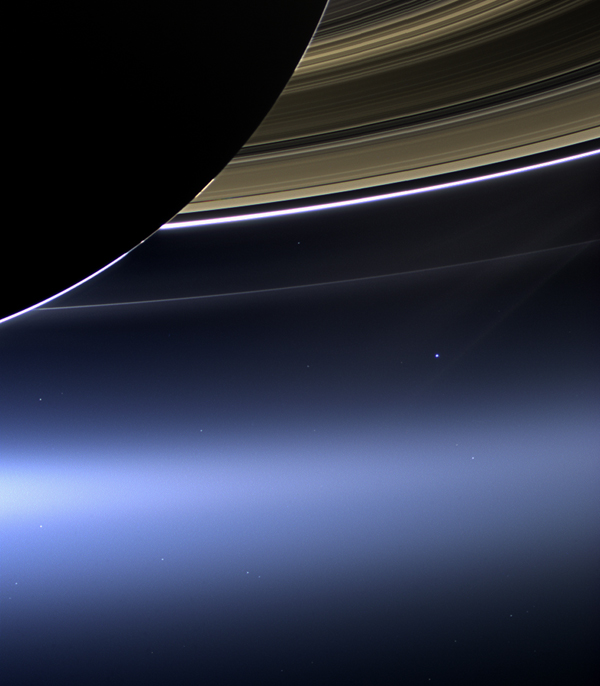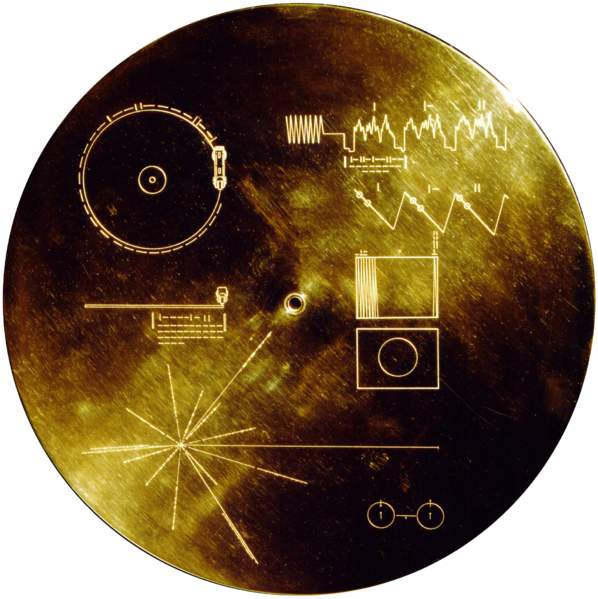A spacecraft from Earth has left its cosmic backyard and taken its first steps in interstellar space .
.
After streaking through space for nearly 35 years, NASA’s robotic Voyager 1 probe finally left the solar system in August 2012, a study published today (Sept. 12) in the journal Science reports.
“Voyager has boldly gone where no probe has gone before, marking one of the most significant technological achievements in the annals of the history of science, and as it enters interstellar space, it adds a new chapter in human scientific dreams and endeavors,” NASA science chief John Grunsfeld said in a statement. “Perhaps some future deep-space explorers will catch up with Voyager, our first interstellar envoy, and reflect on how this intrepid spacecraft helped enable their future.”
A long and historic journey
Voyager 1 launched on Sept. 5, 1977, about two weeks after its twin, Voyager 2. Together, the two probes conducted a historic “grand tour” of the outer planets, giving scientists some of their first up-close looks at Jupiter, Saturn, Uranus, Neptune and the moons of these faraway worlds.
The duo completed its primary mission in 1989, and then kept on flying toward the edge of the heliosphere, the huge bubble of charged particles and magnetic fields that the sun puffs out around itself. Voyager 1 has now popped free of this bubble into the exotic and unexplored realm of interstellar space, scientists say.
They reached this historic conclusion with a little help from the sun. A powerful solar eruption caused electrons in Voyager 1’s location to vibrate signficantly between April 9 and May 22 of this year. The probe’s plasma wave instrument detected these oscillations, and researchers used the measurements to figure out that Voyager 1’s surroundings contained about 1.3 electrons per cubic inch (0.08 electrons per cubic centimeter).
That’s far higher than the density observed in the outer regions of the heliosphere (roughly 0.03 electrons per cubic inch, or 0.002 electrons per cubic cm) and very much in line with the 1.6 electrons per cubic inch (0.10 electrons per cubic cm) or so expected in interstellar space. [Photos from NASA’s Voyager 1 and 2 Probes]
“We literally jumped out of our seats when we saw these oscillations in our data — they showed us that the spacecraft was in an entirely new region, comparable to what was expected in interstellar space, and totally different than in the solar bubble,” study lead author Don Gurnett of the University of Iowa, the principal investigator of Voyager 1’s plasma wave instrument, said in a statement.
— they showed us that the spacecraft was in an entirely new region, comparable to what was expected in interstellar space, and totally different than in the solar bubble,” study lead author Don Gurnett of the University of Iowa, the principal investigator of Voyager 1’s plasma wave instrument, said in a statement.
It may seem surprising that electron density is higher beyond the solar system than in its extreme outer reaches. Interstellar space is, indeed, emptier than the regions in Earth’s neighborhood, but the density inside the solar bubble drops off dramatically at great distances from the sun, researchers said.
Calculating a departure date
The study team wanted to know if Voyager 1 left the solar system sometime before April 2013, so they combed through some of the probe’s older data. They found a monthlong period of electron oscillations in October-November 2012 that translated to a density of 0.004 electrons per cubic inch (0.006 electrons per cubic cm).
Using these numbers and the amount of ground that Voyager 1 covers — about 325 million miles (520 million kilometers) per year — the researchers calculated that the spacecraft likely left the solar system in August 2012.
That time frame matches up well with several other important changes Voyager 1 observed. On Aug. 25, 2012, the probe recorded a 1,000-fold drop in the number of charged solar particles while also measuring a 9 percent increase in fast-moving galactic cosmic rays, which originate beyond the solar system.
“These results, and comparison with previous heliospheric radio measurements, strongly support the view that Voyager 1 crossed the heliopause into the interstellar plasma on or about Aug. 25, 2012,” Gurnett and his colleagues write in the new study.
At that point, Voyager 1 was about 11.25 billion miles (18.11 billion km) from the sun, or roughly 121 times the distance between Earth and the sun. The probe is now 11.66 billion miles (18.76 billion km) from the sun. (Voyager 2, which took a different route through the solar system, is currently 9.54 billion miles, or 15.35 billion km, from the sun.)



 The little space probe that could — Voyager I — is close to leaving our solar system and entering the relative void of interstellar space. As it does so, from a distance of around 18.4 billion kilometers (today), it continues to send back signals of what it finds. And, surprises continue.
The little space probe that could — Voyager I — is close to leaving our solar system and entering the relative void of interstellar space. As it does so, from a distance of around 18.4 billion kilometers (today), it continues to send back signals of what it finds. And, surprises continue.